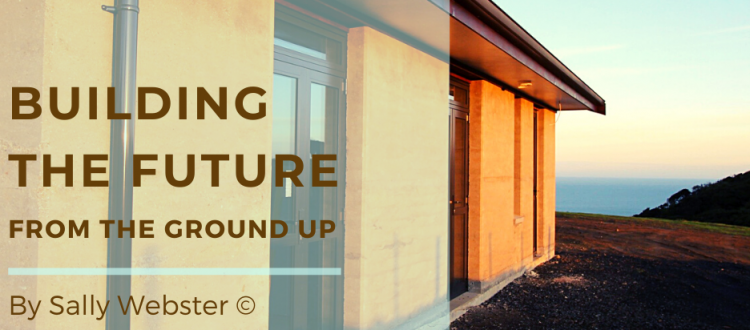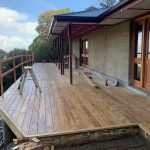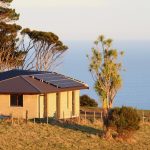From campaigning for sharks to building the future
STARTS.
Rammed earth builder, designer and director of Terra Firma Earth Building Paul Geraets is so determined to capture the hearts and minds of New Zealanders with his building philosophy that he’s even teamed up with writer and communicator Sally Webster to tell the story in a book.
Building the Future; From the Ground Up raised just over NZ$15,000 in a Kickstarter campaign to support telling the story about rammed earth in New Zealand – still a niche building method. The book is more than a how-to manual. It is a story that uses the colourful life of one man and his industry associates to illustrate what building for people and planet is, and what it is not.
Geraets wants to build more earth homes that have a light carbon footprint and support homeowners’ wellbeing through warm, dry walls that bear only a small fraction of non-organic materials. Typically, asthmatics and allergy sufferers report dramatic improvements in wellbeing in a rammed earth home.
It might seem surprising to hear that a builder with a small, environmentally friendly business is backing a book project. But when you learn that Geraets is the same guy who media reported as campaigning against shark fin soup outside the Viaduct’s Grand Harbour restaurant in a shark suit, you start to understand. This builder, surfer, animal welfare and environmental activist really does want to change the world.
Ironically, the Auckland father of three grew up on a Waikato dairy farm where he learnt the basics of building from his Dutch immigrant father. Later, working in Australia and California he picked up some highly efficient construction techniques and brought them back to New Zealand. By that time, he was vegetarian and soon after that became vegan.
“It wasn’t easy to become vegan” says Geraets. “But growing up I just felt something was really wrong with farming and fishing practices. This only became more apparent as myself and others saw the early signs of climate change brought about by deforestation, damage to sea life and marine habitats.
“This ethic strengthened my drive to effect positive change in the built environment and in turn I could see that although these houses had a higher ‘first cost’, they required such little maintenance or heating and cooling intervention. It therefore was also of financial benefit to buyers. And we haven’t even touched on health…that’s in Chapter One!”
The die-hard surfer designed and built his first rammed earth home overlooking the water at Raglan’s Whale Bay and has been working in this medium ever since. The earth doesn’t travel far – in some cases it can be dug from site- and requires minimal chemical intervention such as cement to ensure strength and safety.
Consequently, rammed earth embodies far less carbon at both build and life-cycle stages. These houses are built using single-phase construction that consists of earth being mixed on site then compacted into wooden forms that get removed to leave the wall standing for hundreds, if not thousands of years. When explaining to the uninitiated, Geraets likens it to making a sandcastle, except with a strength comparable to concrete.
Builders who have come across from the high-unit and ‘fast’ housing industry say they “feel like builders again”, preferring the healthy on-site environment to stapling together prefabricated factory components. These materials off-gas substances known as Volatile Organic Compounds (VOC’s) that have been documented as causing long term health issues.
Once published in mid 2022, the book will encourage more new home buyers and builders to take up the rammed earth cause for everyone’s sake. The campaign can still be found at https://www.kickstarter.com/projects/buildingthefuture/building-the-future-from-the-ground-up showing reward pledges for the Chapter One package, which includes four pages of reference notes.
ENDS
For more information and media interviews please contact Sally Webster in the first instance on +64 21 599 191 or sally@casebasketcomms.com



